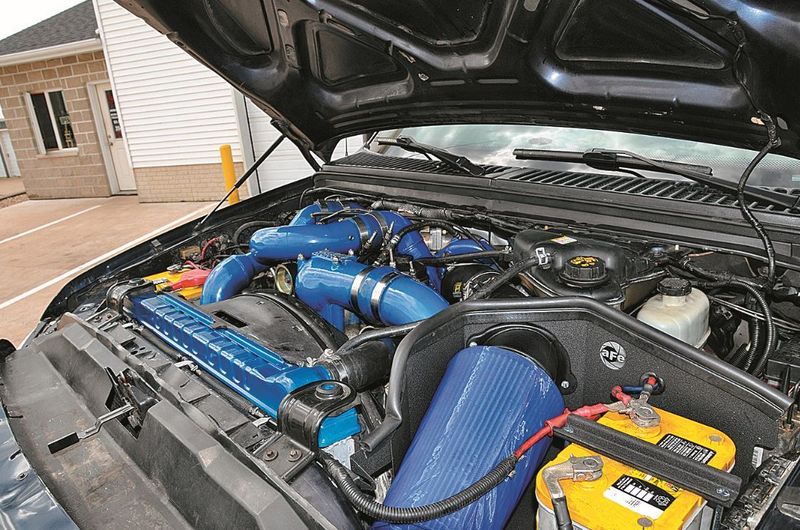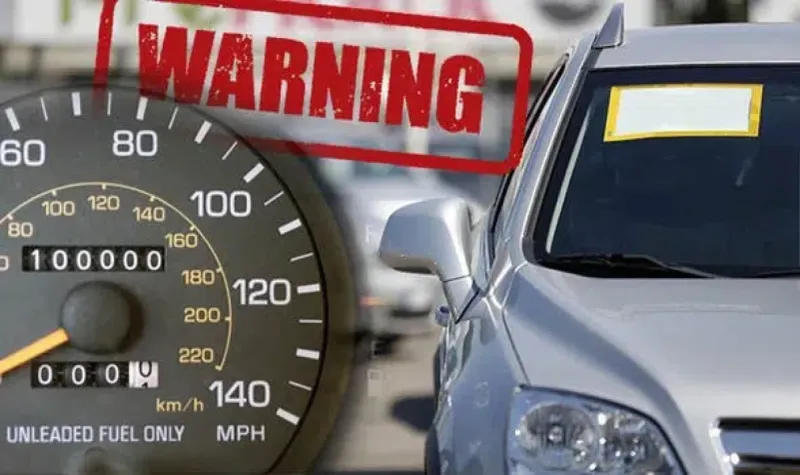📖 Table of Content:
- 1. Unusually Low Price
- 2. Missing or Incomplete Documentation
- 3. Odd Noises During Test Drive
- 4. Inconsistent Paint Job
- 5. Suspiciously Clean Engine
- 6. High-Pressure Sales Tactics
- 7. Salvage Title
- 8. Overly Worn Interior
- 9. Discrepancies in Mileage Records
- 10. Strong Odors in the Car
- 11. Unexplained Warning Lights
Shopping for a car can be an exciting yet daunting experience. As you navigate through dealerships and online listings, it’s crucial to remain vigilant for signs that something might not be quite right. Recognizing these red flags can save you from costly mistakes and ensure you drive away satisfied with your purchase. Here are eleven warning signs to watch out for during your car buying journey.
1. Unusually Low Price
When a car’s price seems too good to be true, it probably is. An unusually low price might indicate hidden issues, such as mechanical problems or a salvaged title. Always research the market value of the car model you’re interested in, and be wary if the listed price is significantly lower. Ask the seller for detailed vehicle history and consider having a trusted mechanic inspect the car. A bargain deal could lead to unexpected repair costs down the line, turning your dream purchase into a financial burden. Proceed with caution and prioritize transparency over seeming cheap deals.
2. Missing or Incomplete Documentation
Complete and accurate documentation is essential when buying a car. Missing or incomplete paperwork can lead to significant headaches. Ensure you receive the car’s title, registration, and a valid bill of sale. The vehicle history report is also crucial to uncover past accidents or repairs. A seller hesitant to provide these documents might be hiding something. Verify that all information matches the car’s details and confirm authenticity. Don’t rush the process; thorough documentation review ensures you’re not left with a compromised vehicle. A clear paper trail protects your investment and provides peace of mind.
3. Odd Noises During Test Drive
Listen carefully during a test drive for any odd noises such as clunks, squeals, or rattles. These sounds might signal underlying mechanical issues demanding immediate attention. A knowledgeable car enthusiast or mechanic can help identify problematic noises. Ensure to test the car both in city and highway conditions to detect any hidden concerns. Don’t ignore these auditory clues, as they could indicate expensive repairs post-purchase. Trust your instincts and prioritize vehicles running smoothly and quietly. Ignoring this red flag might lead to unforeseen mechanical failures after leaving the lot.
4. Inconsistent Paint Job
Paint inconsistencies could suggest past accidents or repairs. While inspecting a car, look for mismatched colors or uneven paint surfaces. Check under good lighting conditions to spot any differences. These variations may imply that the car has undergone significant bodywork. If you notice discrepancies, ask the seller about the car’s history, and confirm through a trusted vehicle report. While not always a deal-breaker, understanding the reasons behind a new paint job is crucial. Transparency about the vehicle’s past can reveal potential problems that might affect its longevity and value.
5. Suspiciously Clean Engine
An engine that’s too clean might raise suspicion. While maintenance is vital, a spotless engine could indicate recent cleaning to hide leaks or other problems. A normal engine would have some grease and dirt from regular use. Examine the engine bay for signs of leaks or new parts. If it looks unusually pristine, ask why. The seller’s response can provide insights into the car’s maintenance history. Transparency is key, as concealing issues may lead to severe mechanical problems. Be cautious of a seller who can’t provide a satisfactory explanation for an exceptionally clean engine.
6. High-Pressure Sales Tactics
Beware of high-pressure sales tactics, as they often signal trouble. If a seller insists on rushing your decision or offers too-good-to-be-true deals, take a step back. High-pressure tactics are often used to offload problematic cars. Take your time to evaluate the car, review documentation, and consider other options. A reputable seller respects your pace and provides the necessary information to make an informed decision. Don’t let anyone rush you into a purchase, as it could lead to regrettable choices. Confidence in your decision-making process ensures a satisfactory car-buying experience.
7. Salvage Title
A salvage title indicates a vehicle has been declared a total loss by an insurance company. While such vehicles might be repaired and resold, they often come with hidden issues, impacting safety and resale value. Investigate why the car received a salvage title and ensure it has been thoroughly inspected and repaired. Consider speaking with a mechanic to assess any potential risks. While a lower price might tempt you, weigh the potential cost of future repairs. Salvage titles can complicate insurance and reselling, so proceed with caution when considering such vehicles.
8. Overly Worn Interior
An overly worn interior can reveal a lot about a car’s history. Examine seats, dashboard, and controls for wear and tear inconsistent with the car’s mileage. A well-maintained car should have an interior condition reflecting its usage. Excessive wear might suggest inaccurate mileage or neglect in care. Inquire about previous owners and how the car was used. A neglected interior could hint at overall poor maintenance, potentially leading to hidden mechanical problems. Prioritize vehicles with an interior that matches their age and mileage, ensuring a well-cared-for investment.
9. Discrepancies in Mileage Records
Mileage discrepancies can be a major red flag. Compare the mileage on the odometer with the vehicle’s service records and car history report. Inconsistencies might suggest tampering or fraud. Be cautious if the mileage seems unusually low for the car’s age. Verify that all records align and consider getting an independent report if unsure. A clear and consistent mileage record is crucial for assessing a car’s value and wear. Avoid cars with suspicious mileage histories, as they could hide extensive usage or problems. Trustworthy records ensure transparency and confidence in your purchase.
10. Strong Odors in the Car
Unpleasant odors inside a car might indicate underlying issues. A strong smell of mold, mildew, or chemicals could suggest water damage or poor maintenance. Thoroughly inspect the car for signs of leaks or damp areas, which can lead to lasting damage. Ask the seller about any recent cleaning or deodorizing efforts and seek explanations for persistent smells. A fresh scent should be natural, not masking a problem. Address any odor concerns before committing to a purchase, as they might hint at costly repair needs. A clean-smelling car usually implies proper care and maintenance.
11. Unexplained Warning Lights
Dashboard warning lights serve as indicators of potential problems. If warning lights remain on during a test drive, investigate further. Common issues like engine, brake, or airbag lights should not be ignored. Ask the seller for details and consider having a mechanic evaluate the situation. Warning lights may signify expensive repairs or safety concerns. Ensure they are addressed before finalizing a purchase. A car with unresolved warning lights could lead to future headaches and costs. Prioritize vehicles with clear, functional dashboards to ensure a safe and reliable driving experience.












